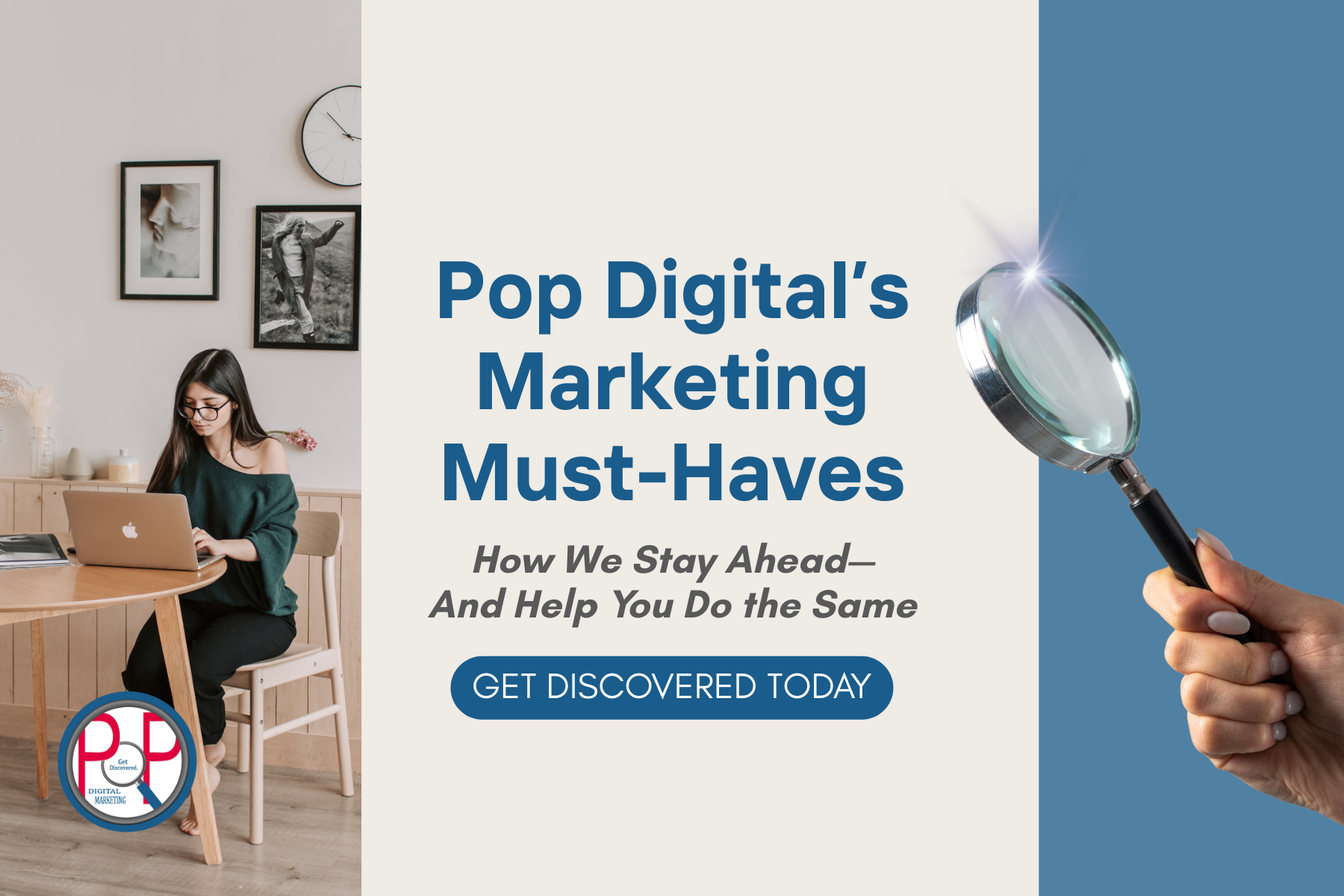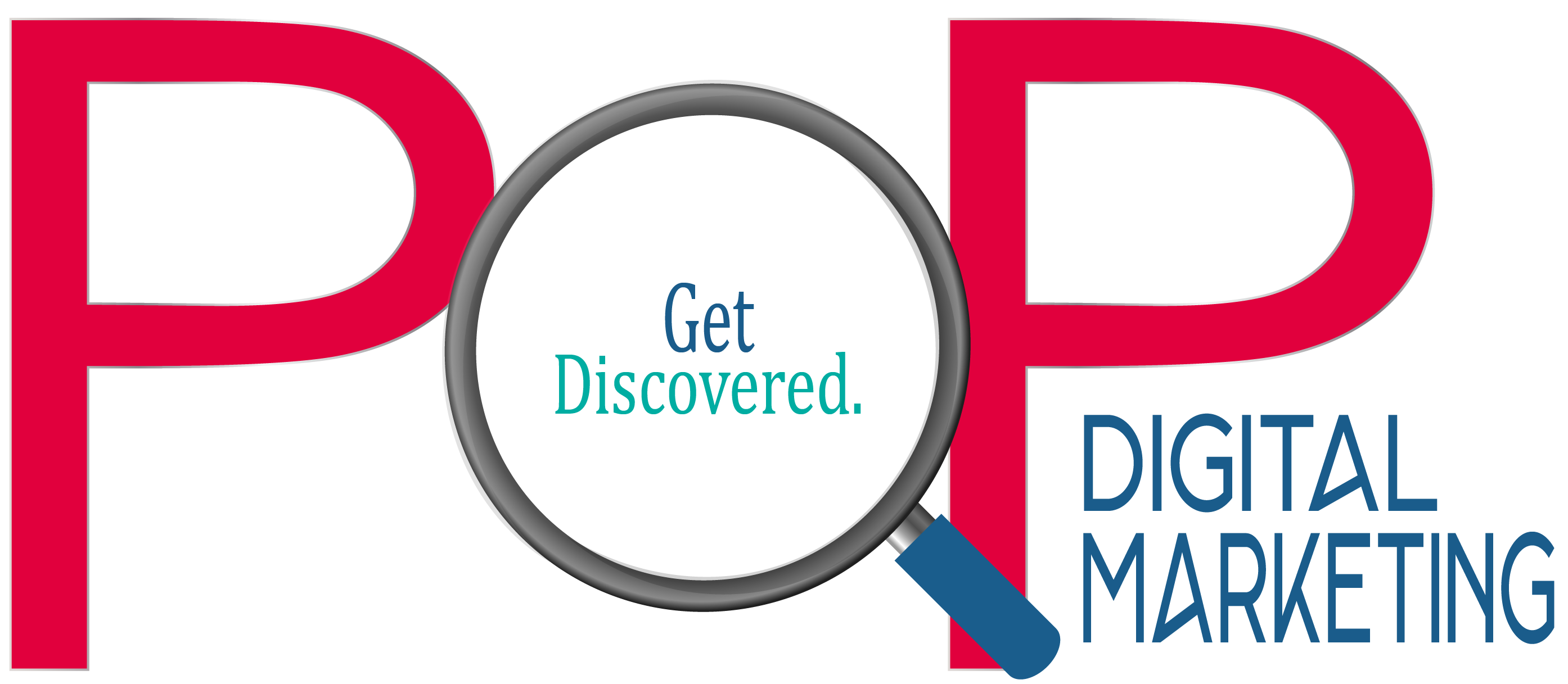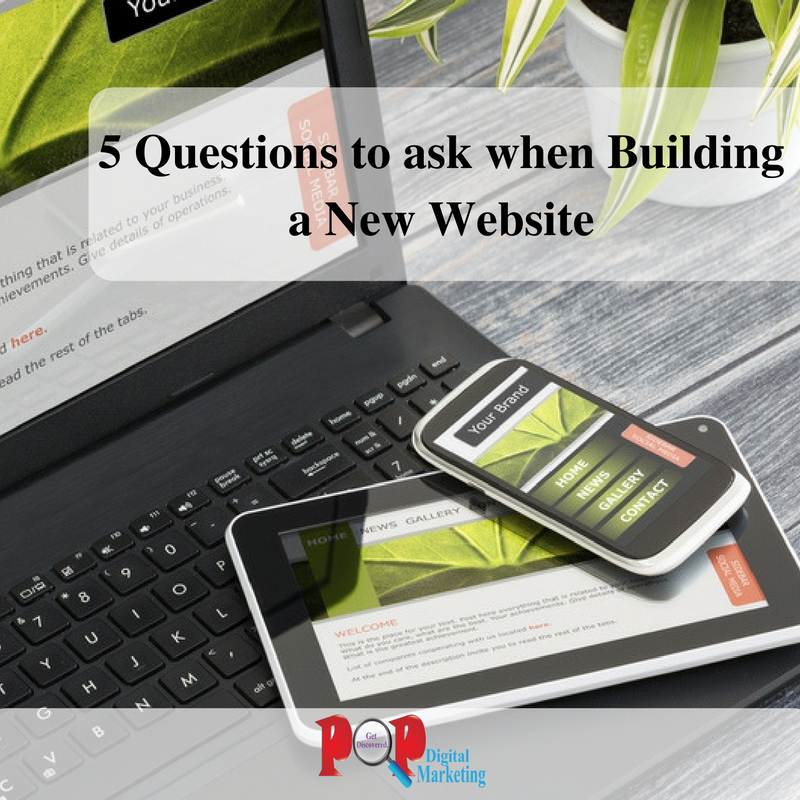
In 2025, digital marketing isn’t just evolving—it’s accelerating. Staying relevant now means more than frequent posting or having a polished website. It requires adapting to new technologies, understanding shifting consumer behavior, and building strategies that actually drive results.
At Pop Digital Marketing, staying ahead of the curve is our norm—so our clients can lead, not follow.
Here are the five essential marketing must-haves your business needs this year—and how we help bring them to life:
-
Short-Form Video That Grabs Attention
According to HubSpot’s 2025 State of Marketing Report, short-form video continues to deliver the highest ROI—especially when paired with influencer collaborations. Platforms like TikTok, Instagram Reels, and YouTube Shorts are now the go-to channels for connecting with Millennial and Gen Z audiences.
🎯 What we do:
We help clients turn video into impact. From content calendars and creative direction to editing tools that simplify the process, we make short-form video both accessible and strategic. Whether it’s behind-the-scenes moments, 15-second tutorials, or livestream Q&As, we help your story land—and stick.
-
AI-Driven Marketing That Works Smarter, Not Harder
AI is no longer an emerging trend—it’s a daily tool. As Deepak Bansal’s 2025 Trends Report shows, AI now drives everything from multi-modal content creation to smarter keyword targeting.
🎯 What we do:
At Pop, we leverage AI to improve efficiency without losing creativity. From refining SEO strategy to automating workflows, we use AI tools to streamline content production and give clients data-informed direction they can trust while maintaining their unique brand identity.
-
Authenticity Through Visual Storytelling
Today’s audiences want more than polished content—they want realness. Visual storytelling creates emotional connection and builds brand loyalty faster than any ad spend alone.
🎯 What we do:
We help brands show up authentically. Our creative team blends branded video, custom carousels, and user-generated content to visually share your values. The result? A brand that feels human—and unforgettable.
-
Hyper-Personalized Content That Converts
Generic marketing doesn’t cut it anymore. Consumers expect content that feels made for them—delivered at the right time, in the right place, with the right message.
🎯 What we do:
We create with purpose. Every website, campaign, and piece of branded content is designed with your ideal audience in mind. We write copy that speaks their language, design responsive websites that guide them to act, and develop visual assets that reflect your brand’s story—built to connect and convert.
-
A Strategy That Evolves With the Industry
Trends shift—but smart strategy adapts. With AI, AR, and platform algorithms constantly changing the game, it’s critical to build marketing that’s rooted in research and made to move.
🎯 What we do:
We conduct in-depth market research and competitive analysis to ensure your campaigns are primed for success from the start. Our strategy-first approach gives you the insights and agility needed to evolve with the market—without falling behind.
Let’s Future-Proof Your Marketing
Whether you’re looking to overhaul your digital strategy or make smart, data-driven refinements, we’re here to help you grow with confidence. At Pop Digital, we don’t just keep up with trends—we help you lead them.
Ready to #GetDiscovered? Let’s build what’s next. Contact us today


 There are many different website building platforms out there and understanding which one your designer is most skilled in is very important. More so, you want to know why they would recommend your site to be built on a specific platform. If you work as a photographer, Square Space may be best for you. Whereas if you have high traffic online store, Drupal may be the top option as it has the highest rating for multiple users at a time. WordPress works great for many CMS (Content Management Systems) needs and is usually Pop Digital Marketing’s “go-to” platform due to its versatility.
There are many different website building platforms out there and understanding which one your designer is most skilled in is very important. More so, you want to know why they would recommend your site to be built on a specific platform. If you work as a photographer, Square Space may be best for you. Whereas if you have high traffic online store, Drupal may be the top option as it has the highest rating for multiple users at a time. WordPress works great for many CMS (Content Management Systems) needs and is usually Pop Digital Marketing’s “go-to” platform due to its versatility.
Recent Comments